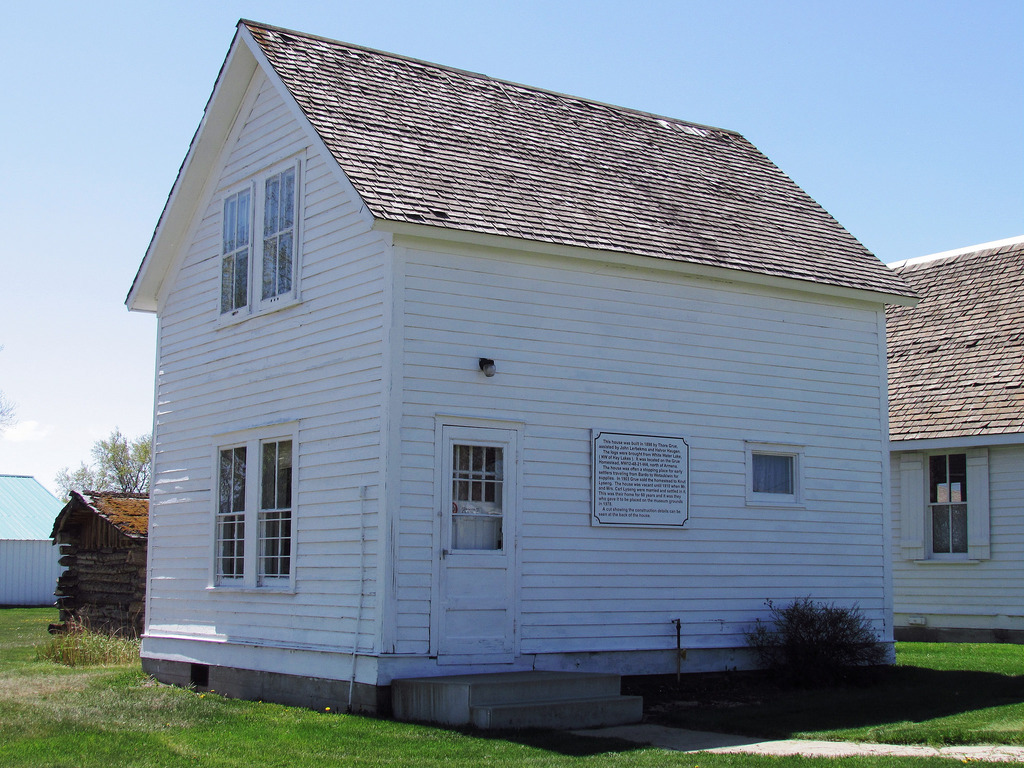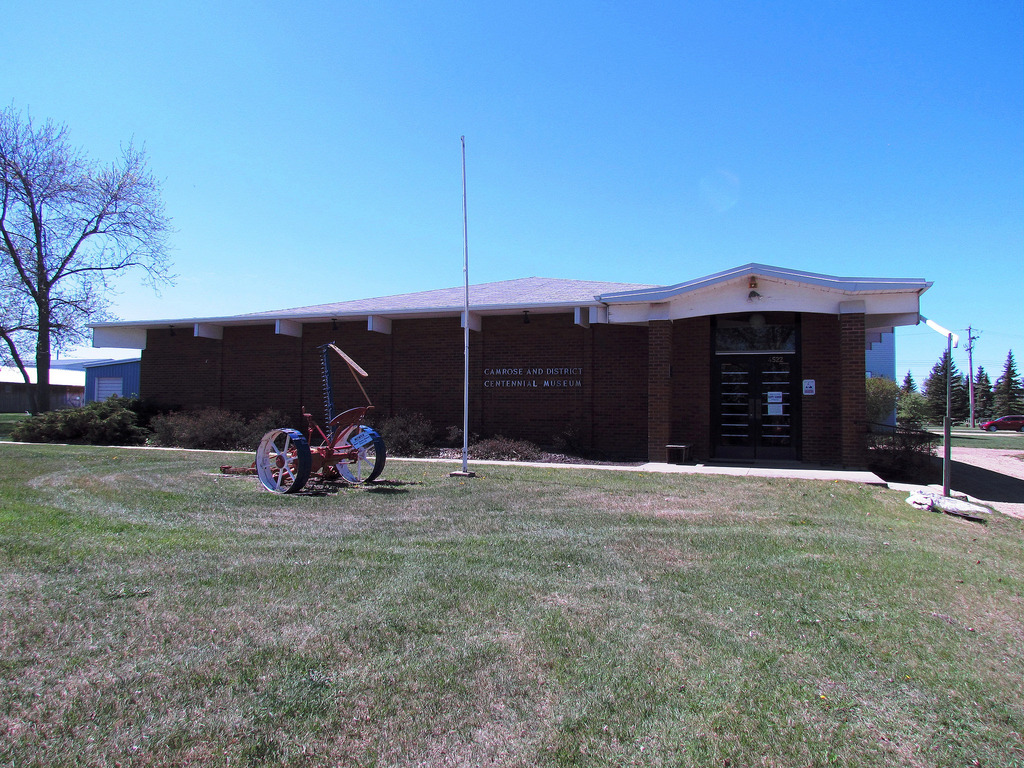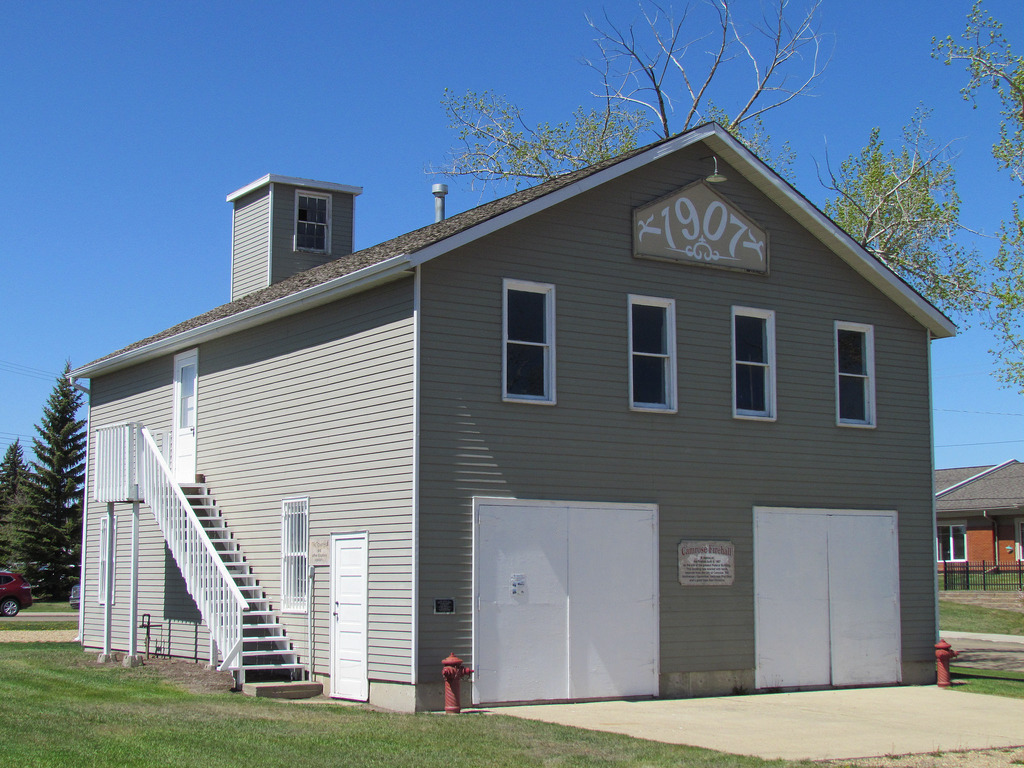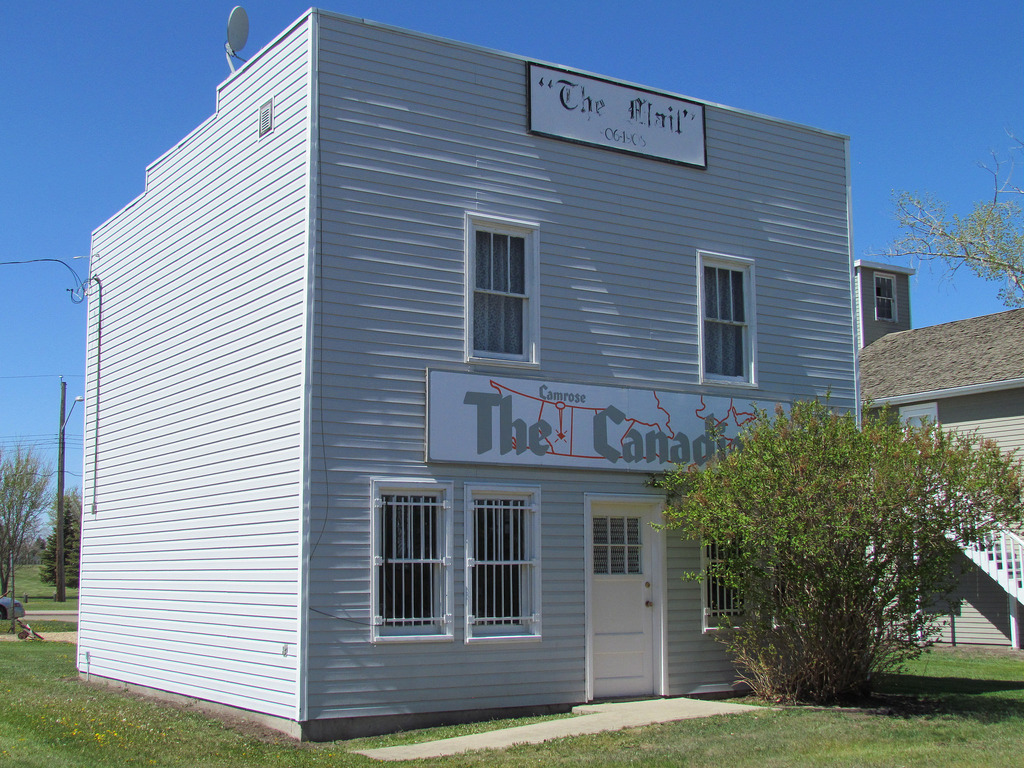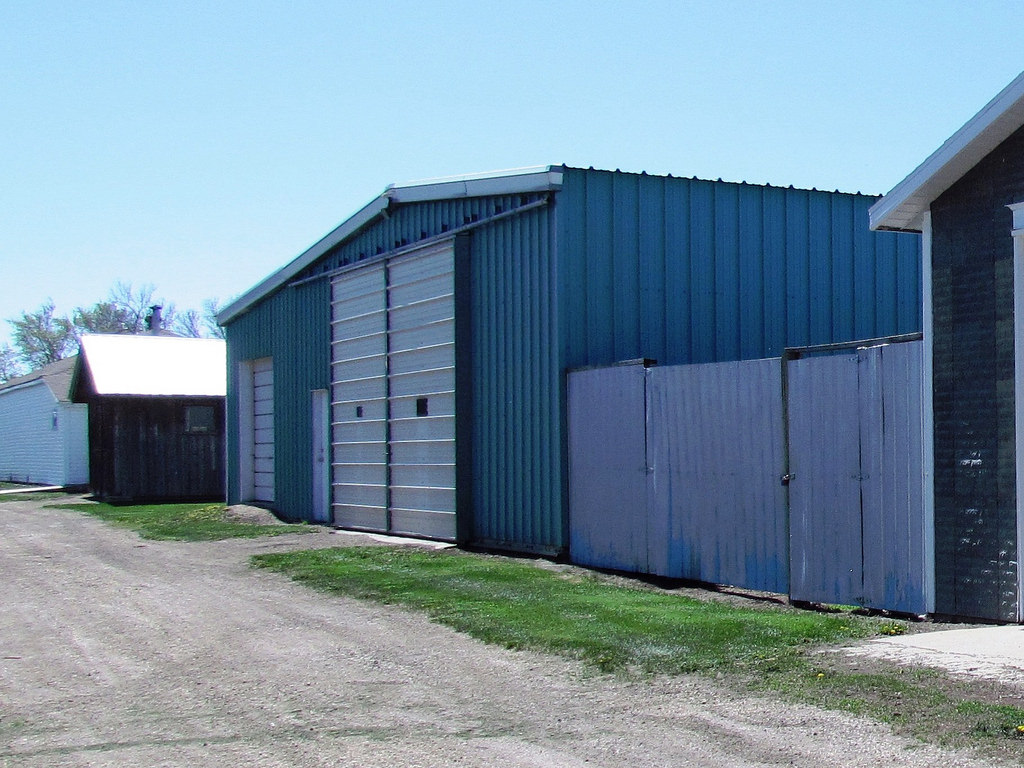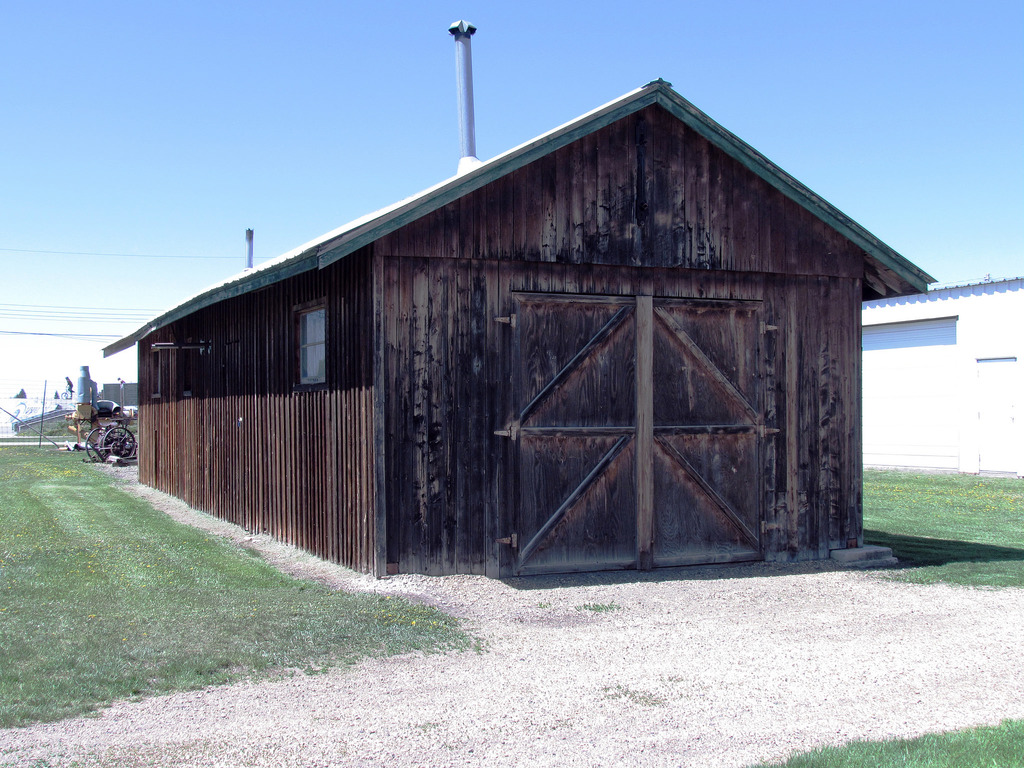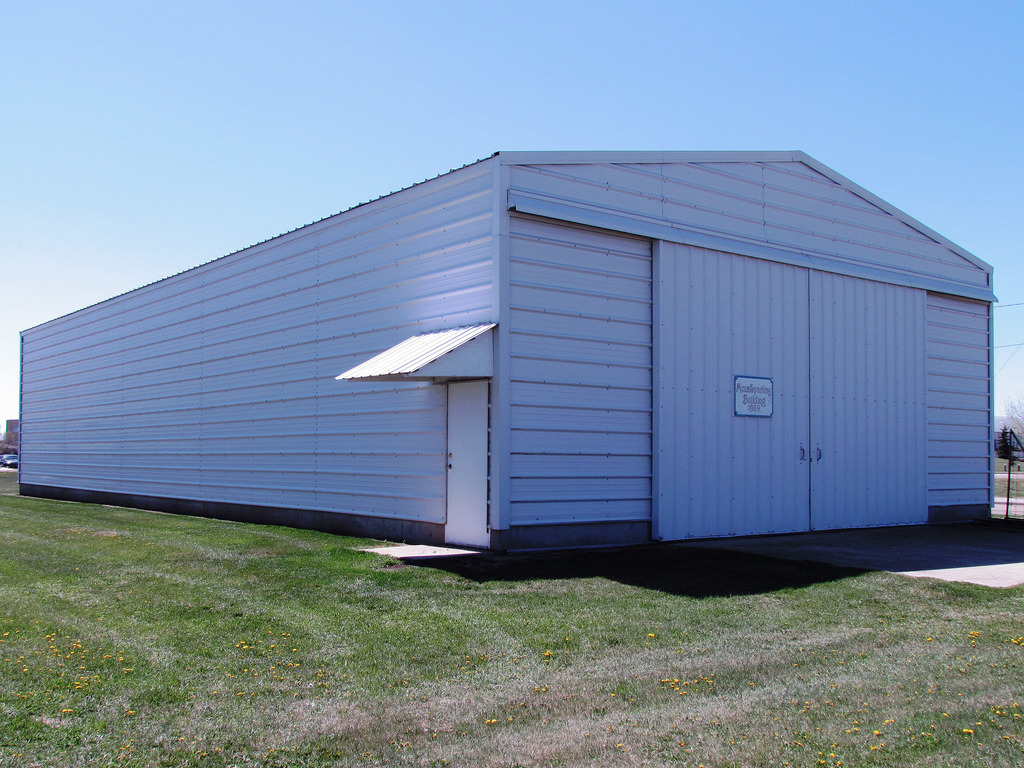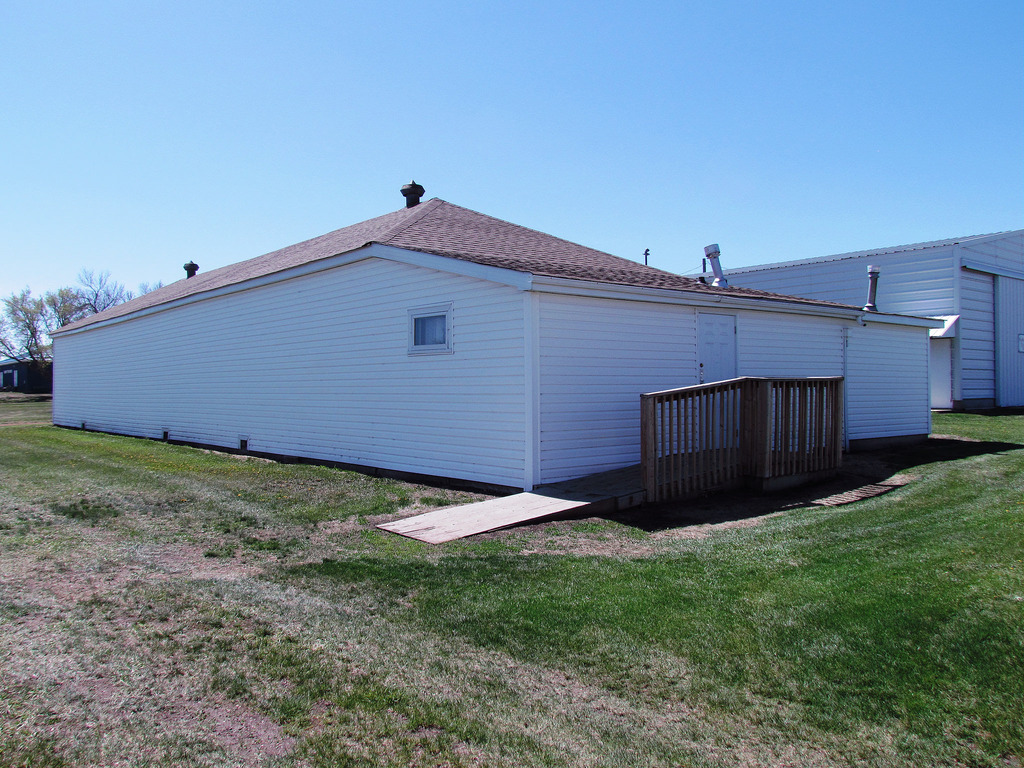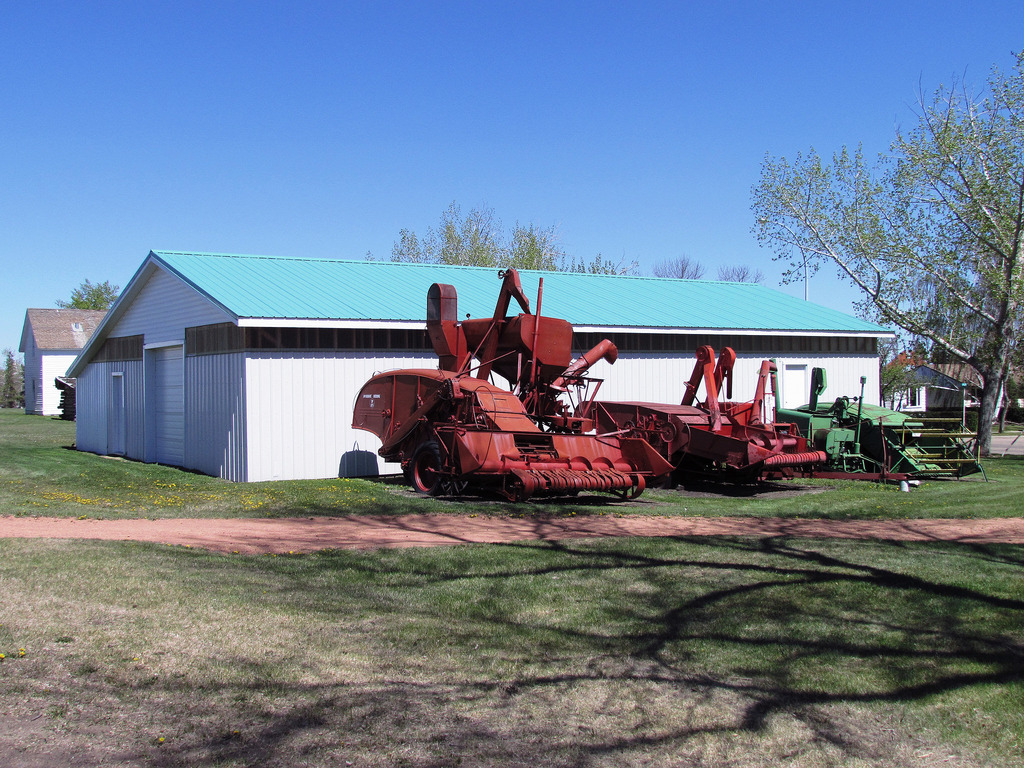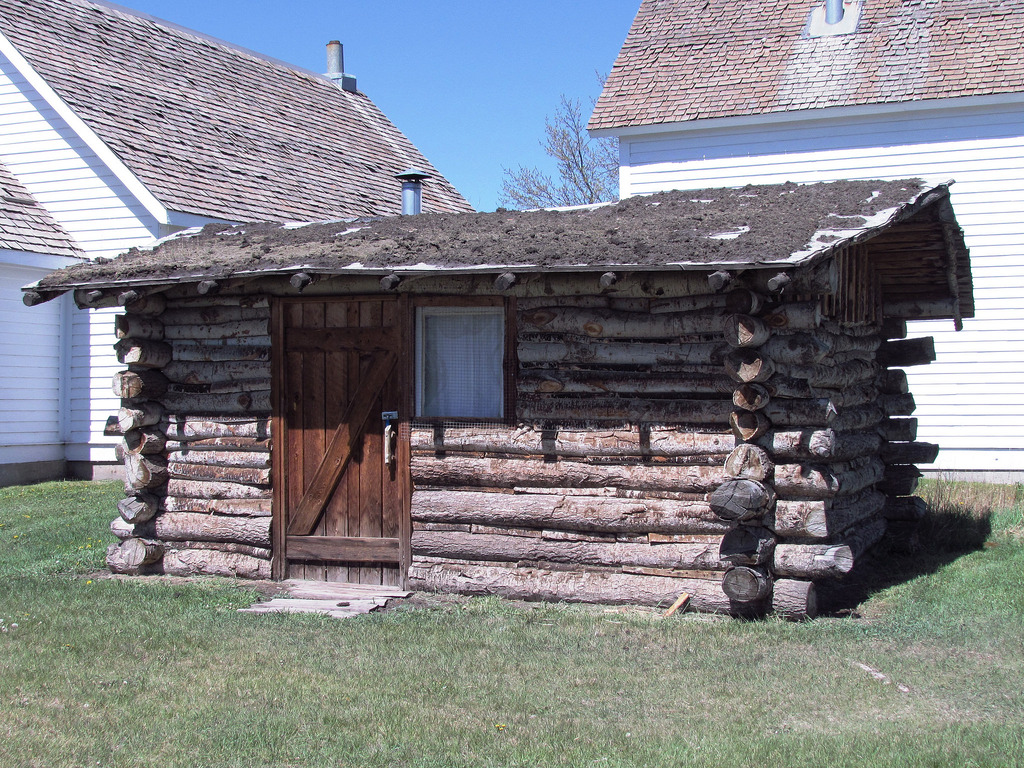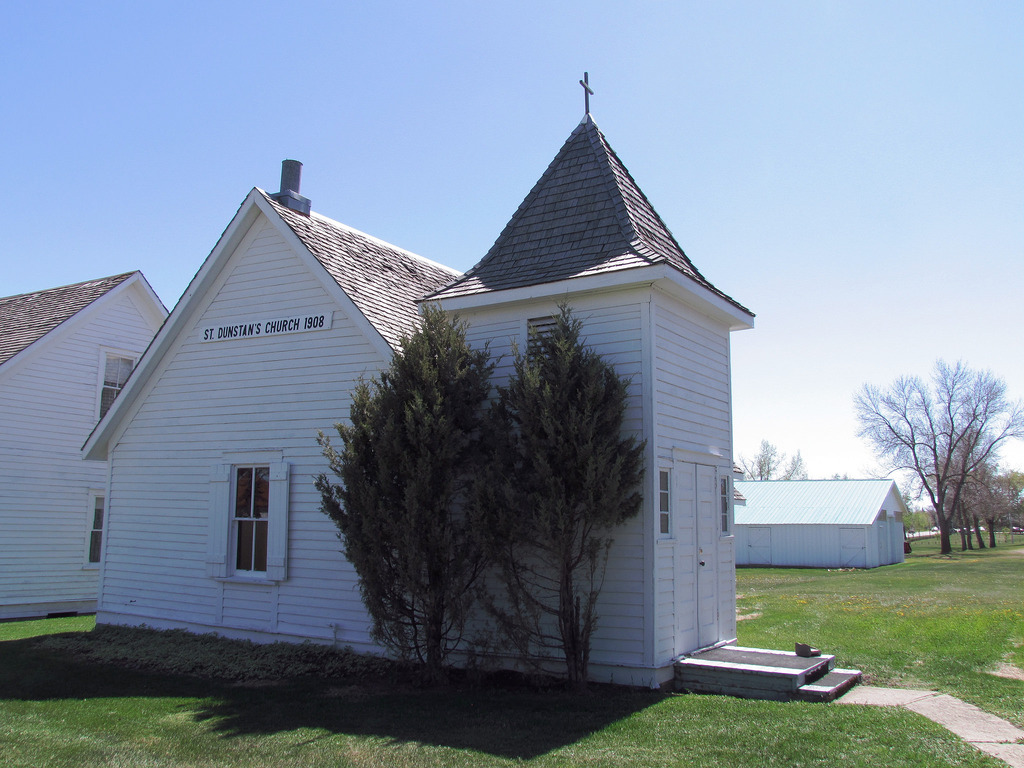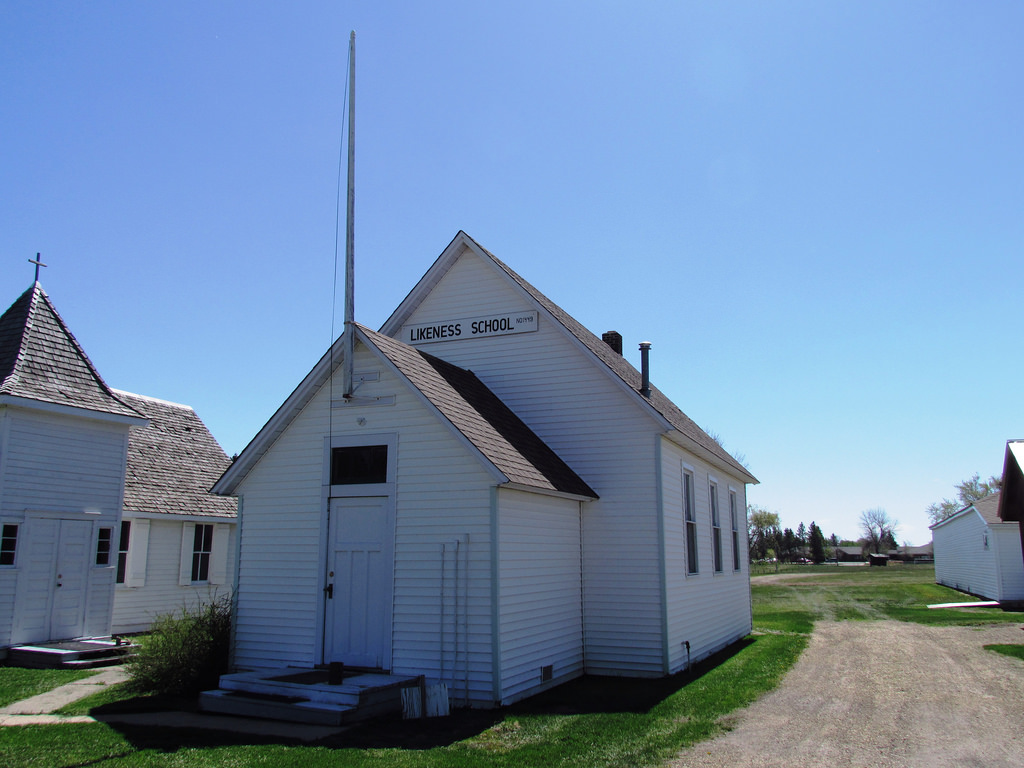This house was built by Thore Grue and family in 1898. The house was initially made of all logs; this can be seen at the back corner of the house with a cutaway view of the original logs. The house was first located just north of Armena. When originally constructed, the house only contained two rooms: one large room upstairs and one large room downstairs. In 1903, the Grue's sold to Mr. Knut Lyseng, who in turn sold the house to his son Carl Lyseng in 1910. Carl and his family moved into the house, living in it until 1969. They made several renovations and additions – a kitchen and dining room in 1915 and a bathroom, entrance, and sun porch in 1935. The home was wired for power in 1950.
The pioneer house has made two moves over the years. The first was done by Knut Lyseng in 1903. He moved it east because it was built too close to the road allowance. This was quite a feat at the time and was done by using only two bob-sleds pulled by two teams of six horses, one team hooked to each sled. The difficulty of such a move was only fully understood when the house was moved to the Camrose Museum. The house was loaded and ready two months before it was moved, but heavy rains prevented the move. The first attempt in moving caused the standard iron beams to twist therefore special equipment had to be used. The building was found to be remarkably square when it was being measured for its new foundation. The final move occurred in 1979. Once moved to the museum grounds, it was restored and furnished. The money to fund the move was raised from raffling off a handmade grandfather clock made by Ambrose Ladell. The Pioneer Home was officially opened on the Museum grounds on September 1, 1980. The furnishings for the house were donated by the community.
